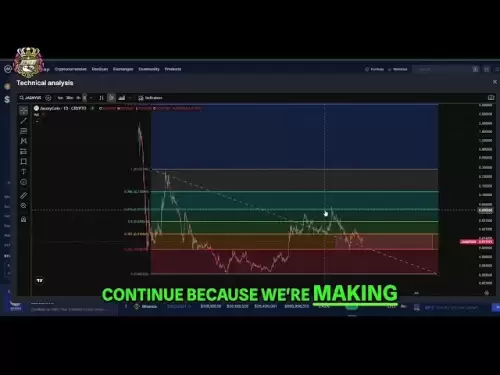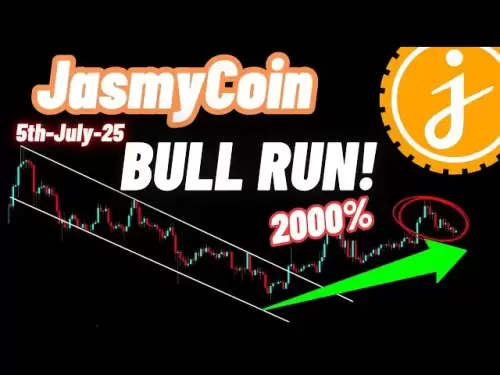-
 Bitcoin
Bitcoin $108,017.2353
-0.81% -
 Ethereum
Ethereum $2,512.4118
-1.58% -
 Tether USDt
Tether USDt $1.0002
-0.03% -
 XRP
XRP $2.2174
-1.03% -
 BNB
BNB $654.8304
-0.79% -
 Solana
Solana $147.9384
-1.76% -
 USDC
USDC $1.0000
-0.01% -
 TRON
TRON $0.2841
-0.76% -
 Dogecoin
Dogecoin $0.1636
-2.09% -
 Cardano
Cardano $0.5726
-1.72% -
 Hyperliquid
Hyperliquid $39.1934
1.09% -
 Sui
Sui $2.9091
-0.59% -
 Bitcoin Cash
Bitcoin Cash $482.1305
0.00% -
 Chainlink
Chainlink $13.1729
-1.54% -
 UNUS SED LEO
UNUS SED LEO $9.0243
-0.18% -
 Avalanche
Avalanche $17.8018
-1.90% -
 Stellar
Stellar $0.2363
-1.69% -
 Toncoin
Toncoin $2.7388
-3.03% -
 Shiba Inu
Shiba Inu $0.0...01141
-1.71% -
 Litecoin
Litecoin $86.3646
-1.98% -
 Hedera
Hedera $0.1546
-0.80% -
 Monero
Monero $311.8554
-1.96% -
 Dai
Dai $1.0000
-0.01% -
 Polkadot
Polkadot $3.3473
-2.69% -
 Ethena USDe
Ethena USDe $1.0001
-0.01% -
 Bitget Token
Bitget Token $4.3982
-1.56% -
 Uniswap
Uniswap $6.9541
-5.35% -
 Aave
Aave $271.7716
0.96% -
 Pepe
Pepe $0.0...09662
-1.44% -
 Pi
Pi $0.4609
-4.93%
How to calculate the contract liquidation price of Gate.io? Risk warning settings
Calculate liquidation price on Gate.io to manage risk: long position formula is Entry Price * (1 - Maintenance Margin Rate/Leverage); set risk warnings to avoid sudden liquidation.
Apr 28, 2025 at 02:14 am
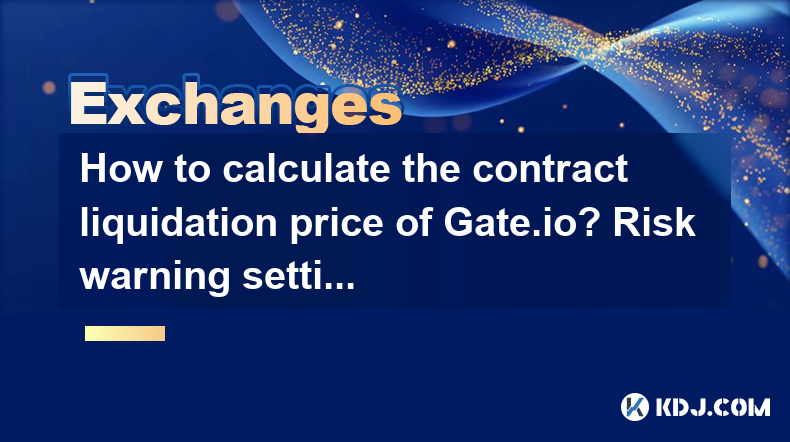
When trading on Gate.io, understanding how to calculate the contract liquidation price and setting appropriate risk warnings is crucial for managing your investments effectively. This article will guide you through the process of calculating the liquidation price for contracts and setting up risk warnings on Gate.io.
Understanding Contract Liquidation Price
The liquidation price is the price at which your position will be forcibly closed to prevent further losses. It is essential to know this price to manage your risk effectively. The liquidation price varies depending on whether you are holding a long or short position.
Calculating Liquidation Price for Long Positions
For a long position, the liquidation price is calculated as follows:
- Maintenance Margin Rate: This is the minimum amount of margin required to keep your position open.
- Entry Price: The price at which you opened your position.
- Leverage: The amount of leverage you are using.
The formula for the liquidation price of a long position is:
[ \text{Liquidation Price} = \text{Entry Price} \times (1 - \text{Maintenance Margin Rate} / \text{Leverage}) ]
Example: If you enter a long position at an entry price of $10,000 with a leverage of 10x and a maintenance margin rate of 0.5%, your liquidation price would be:
[ \text{Liquidation Price} = 10,000 \times (1 - 0.005 / 10) = 10,000 \times 0.9995 = 9,995 ]
Calculating Liquidation Price for Short Positions
For a short position, the liquidation price is calculated differently:
[ \text{Liquidation Price} = \text{Entry Price} \times (1 + \text{Maintenance Margin Rate} / \text{Leverage}) ]
Example: If you enter a short position at an entry price of $10,000 with a leverage of 10x and a maintenance margin rate of 0.5%, your liquidation price would be:
[ \text{Liquidation Price} = 10,000 \times (1 + 0.005 / 10) = 10,000 \times 1.0005 = 10,005 ]
Setting Up Risk Warnings on Gate.io
Gate.io allows you to set up risk warnings to alert you when your position is approaching the liquidation price. This can help you take timely actions to manage your risk.
Steps to Set Up Risk Warnings
Here are the detailed steps to set up risk warnings on Gate.io:
- Log into your Gate.io account: Ensure you are logged into your Gate.io account and navigate to the trading section.
- Select the Contract: Choose the specific contract you are trading.
- Open the Position Management Section: Click on the position management section to view your current positions.
- Set Up Risk Warnings: Look for the risk warning settings. You can usually find this under the advanced settings or risk management tab.
- Enter the Warning Price: Set the warning price at a level where you want to be alerted. This should be a price that is higher than your liquidation price for long positions and lower for short positions.
- Save the Settings: Confirm and save your risk warning settings.
Importance of Monitoring Liquidation Price
Monitoring your liquidation price is crucial for effective risk management. By knowing your liquidation price, you can set stop-loss orders and take-profit levels to protect your investments.
Using Stop-Loss Orders
Stop-loss orders can be used to automatically close your position when the market reaches a certain price, helping to minimize potential losses. To set a stop-loss order on Gate.io:
- Navigate to the Trading Interface: Go to the trading interface for the contract you are trading.
- Select the Position: Choose the position for which you want to set the stop-loss.
- Set the Stop-Loss Price: Enter the price at which you want the position to be closed. This should be set above the liquidation price for long positions and below for short positions.
- Confirm the Order: Review and confirm the stop-loss order.
Adjusting Leverage and Margin
Adjusting your leverage and margin can also impact your liquidation price. Higher leverage increases the risk of liquidation, while lower leverage can provide more buffer.
How to Adjust Leverage on Gate.io
To adjust the leverage on Gate.io:
- Access the Trading Interface: Go to the trading interface for the contract you are trading.
- Select the Position: Choose the position for which you want to adjust the leverage.
- Adjust the Leverage: Use the leverage adjustment tool to increase or decrease the leverage.
- Confirm the Changes: Review and confirm the new leverage setting.
Practical Example of Risk Management
Let's consider a practical example to illustrate the importance of understanding liquidation prices and setting risk warnings.
Example Scenario: You open a long position on Bitcoin at an entry price of $50,000 with 20x leverage. The maintenance margin rate is 0.5%.
- Calculate the Liquidation Price: Using the formula for long positions:
[ \text{Liquidation Price} = 50,000 \times (1 - 0.005 / 20) = 50,000 \times 0.99975 = 49,987.5 ]
- Set a Risk Warning: You decide to set a risk warning at $49,990, which is slightly above your liquidation price.
- Set a Stop-Loss Order: You set a stop-loss order at $49,995, which is between your risk warning and liquidation price.
By setting these parameters, you ensure that you are alerted before reaching the liquidation price and have an automatic mechanism to close your position to prevent liquidation.
Frequently Asked Questions
Q1: Can the liquidation price change after opening a position?
Yes, the liquidation price can change if you adjust your leverage or if the maintenance margin rate changes. Always monitor these factors to stay informed about your liquidation price.
Q2: What happens if I don't set a risk warning?
If you don't set a risk warning, you won't receive alerts as your position approaches the liquidation price. This increases the risk of sudden liquidation without your awareness.
Q3: Is it possible to avoid liquidation completely?
While it's not possible to avoid liquidation completely, you can minimize the risk by setting appropriate stop-loss orders, adjusting leverage, and closely monitoring your positions.
Q4: Can I set multiple risk warnings for a single position?
Yes, Gate.io allows you to set multiple risk warnings for a single position, which can help you manage your risk at different price levels.
Disclaimer:info@kdj.com
The information provided is not trading advice. kdj.com does not assume any responsibility for any investments made based on the information provided in this article. Cryptocurrencies are highly volatile and it is highly recommended that you invest with caution after thorough research!
If you believe that the content used on this website infringes your copyright, please contact us immediately (info@kdj.com) and we will delete it promptly.
- PEPE, BONK, and Remittix: Meme Coins Meet Real-World Utility
- 2025-07-06 02:30:13
- Score Big This Weekend with BetMGM Bonus Code for MLB Games
- 2025-07-06 02:50:13
- PENGU Token's eToro Debut and Weekly Surge: What's Driving the Hype?
- 2025-07-06 02:30:13
- Singapore's Crypto Crackdown: Laundering, Licenses, and Lessons
- 2025-07-06 02:50:13
- Royal Mint Coins: Unearthing the Rarest Queen Elizabeth II Treasures
- 2025-07-06 00:30:12
- BlockDAG, SEI, and HYPE: Decoding the Crypto Buzz in the Big Apple
- 2025-07-06 00:50:13
Related knowledge
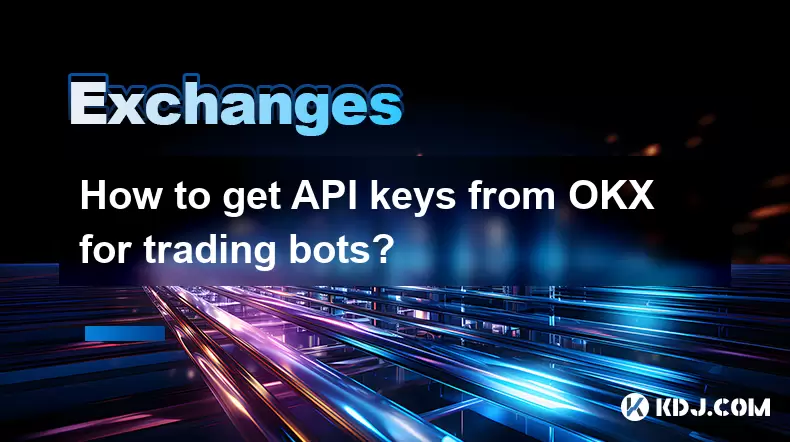
How to get API keys from OKX for trading bots?
Jul 03,2025 at 07:07am
Understanding API Keys on OKXTo interact with the OKX exchange programmatically, especially for building or running trading bots, you need to obtain an API key. An API (Application Programming Interface) key acts as a secure token that allows your bot to communicate with the exchange's servers. On OKX, these keys come with customizable permissions such ...
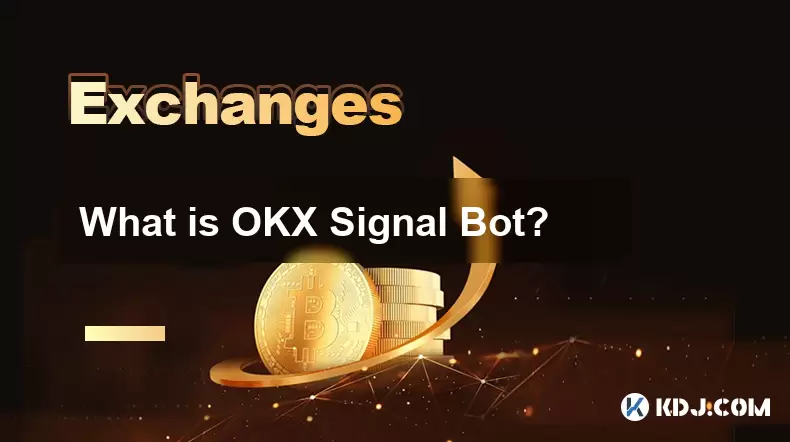
What is OKX Signal Bot?
Jul 02,2025 at 11:01pm
Understanding the Basics of OKX Signal BotThe OKX Signal Bot is a feature within the OKX ecosystem that provides users with automated trading signals and execution capabilities. Designed for both novice and experienced traders, this bot helps identify potential trading opportunities by analyzing market trends, technical indicators, and historical data. ...
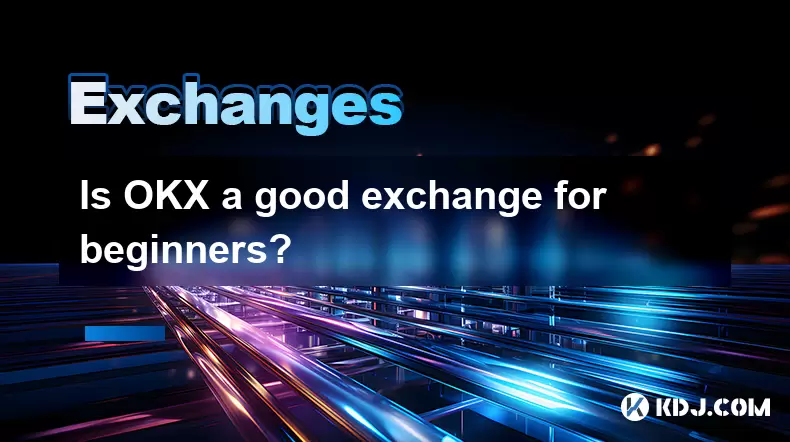
Is OKX a good exchange for beginners?
Jul 03,2025 at 05:00pm
What Is OKX and Why Is It Popular?OKX is one of the leading cryptocurrency exchanges globally, known for its robust trading infrastructure and a wide variety of digital assets available for trading. It supports over 300 cryptocurrencies, including major ones like Bitcoin (BTC), Ethereum (ETH), and Solana (SOL). The platform has gained popularity not onl...
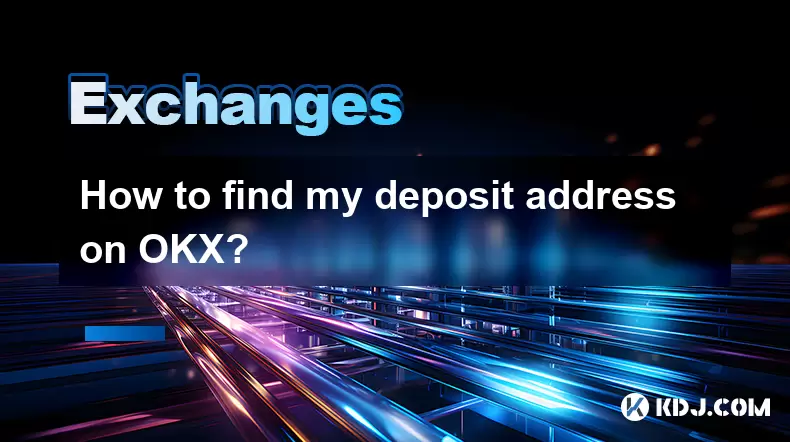
How to find my deposit address on OKX?
Jul 06,2025 at 02:28am
What is a Deposit Address on OKX?A deposit address on OKX is a unique alphanumeric identifier that allows users to receive cryptocurrencies into their OKX wallet. Each cryptocurrency has its own distinct deposit address, and using the correct one is crucial to ensure funds are received properly. If you're looking to transfer digital assets from another ...
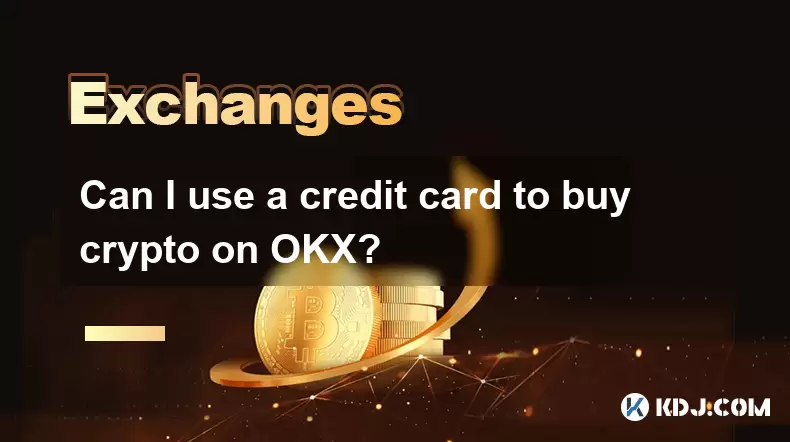
Can I use a credit card to buy crypto on OKX?
Jul 04,2025 at 04:28am
Understanding OKX and Credit Card PaymentsOKX is one of the leading cryptocurrency exchanges globally, offering a wide range of services including spot trading, derivatives, staking, and more. Users often wonder whether they can use a credit card to buy crypto on OKX, especially if they are new to the platform or looking for quick ways to enter the mark...
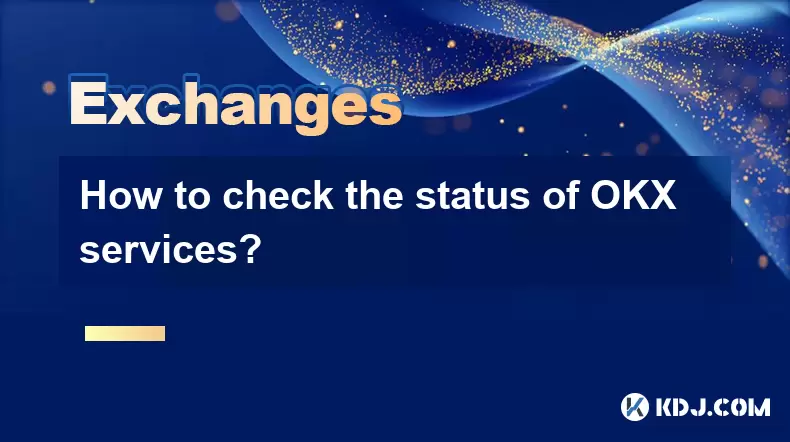
How to check the status of OKX services?
Jul 02,2025 at 11:14pm
What is OKX, and Why Checking Service Status Matters?OKX is one of the world’s leading cryptocurrency exchanges, offering services such as spot trading, futures trading, staking, and more. With millions of users relying on its platform for daily transactions, it's crucial to know how to check the status of OKX services. Downtime or maintenance can affec...

How to get API keys from OKX for trading bots?
Jul 03,2025 at 07:07am
Understanding API Keys on OKXTo interact with the OKX exchange programmatically, especially for building or running trading bots, you need to obtain an API key. An API (Application Programming Interface) key acts as a secure token that allows your bot to communicate with the exchange's servers. On OKX, these keys come with customizable permissions such ...

What is OKX Signal Bot?
Jul 02,2025 at 11:01pm
Understanding the Basics of OKX Signal BotThe OKX Signal Bot is a feature within the OKX ecosystem that provides users with automated trading signals and execution capabilities. Designed for both novice and experienced traders, this bot helps identify potential trading opportunities by analyzing market trends, technical indicators, and historical data. ...

Is OKX a good exchange for beginners?
Jul 03,2025 at 05:00pm
What Is OKX and Why Is It Popular?OKX is one of the leading cryptocurrency exchanges globally, known for its robust trading infrastructure and a wide variety of digital assets available for trading. It supports over 300 cryptocurrencies, including major ones like Bitcoin (BTC), Ethereum (ETH), and Solana (SOL). The platform has gained popularity not onl...

How to find my deposit address on OKX?
Jul 06,2025 at 02:28am
What is a Deposit Address on OKX?A deposit address on OKX is a unique alphanumeric identifier that allows users to receive cryptocurrencies into their OKX wallet. Each cryptocurrency has its own distinct deposit address, and using the correct one is crucial to ensure funds are received properly. If you're looking to transfer digital assets from another ...

Can I use a credit card to buy crypto on OKX?
Jul 04,2025 at 04:28am
Understanding OKX and Credit Card PaymentsOKX is one of the leading cryptocurrency exchanges globally, offering a wide range of services including spot trading, derivatives, staking, and more. Users often wonder whether they can use a credit card to buy crypto on OKX, especially if they are new to the platform or looking for quick ways to enter the mark...

How to check the status of OKX services?
Jul 02,2025 at 11:14pm
What is OKX, and Why Checking Service Status Matters?OKX is one of the world’s leading cryptocurrency exchanges, offering services such as spot trading, futures trading, staking, and more. With millions of users relying on its platform for daily transactions, it's crucial to know how to check the status of OKX services. Downtime or maintenance can affec...
See all articles





















